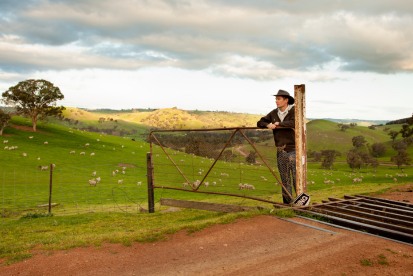Although the outlook for commodity prices remains strong at the time of writing, so do the prices for the most common farming inputs like fertiliser, chemicals, and fuel. These cost increases will be compounded by the increased cost of service debt due to rising interest rates. This combination of cost increases in 2023 will have the effect of putting a tight squeeze on gross margins, increasing the risk of financial losses in the event of a poor yield or production losses.
At this year’s AAAC(WA) Outlook conference in November, a panel of farm business advisors assessed how these changes affect 2023 budgets.
They forecast that operating expenses as a percentage of gross farm income will go from 40% to 48% in 2022 to 75% to 90% in 2023! This does not leave much margin to pay down debt or overhead costs.
This does not leave much margin to pay down debt or overhead costs. Since the event, we have seen a softening of fertilizer prices, although they remain historically high. We have also seen a softening of grain prices.
What does this mean?
High rainfall areas are doing very well and look to do better in 2023, as they generally have a higher percentage of livestock in the enterprise mix. The margins for sheep, in particular, are holding up well.
Farms in the low-rainfall zone that have purchased additional land and incurred a lot of debt will find it harder to service their debt in 2023 and could suffer a reduction in net worth (equity) unless they get very high yields, very high prices, or both.
Farms in the medium rainfall areas that have purchased farms are at risk of making cash deficits in 2023 unless they get very high yields, very high prices, or both.
How should you plan for 2023?
To survive and even thrive in 2023, I encourage you to invest in detailed financial planning and constant review throughout the year. You need to:
- Have explicit knowledge of your current position.
- Have a clear objective.
- Know what available resources you have (land, stock, machinery, labour, working capital, etc.)
- Know your controllable risks and your uncontrollable risks (or unknowns).
Based on all this information, you make detailed production plans and equally detailed financial plans (budgets) to “ground truth” your production plans, as all of your wins and losses will be measured not in production but in dollars!
Like any plan, your plans will not survive first contact with your enemy (weather, markets, breakdowns, health, etc.). So, when planning for the battle at the beginning of this season, I strongly encourage you to think through and make many alternate plans based on possible scenarios.
Firstly, I strongly suggest using budget modeling, not just a spreadsheet or a simple cash flow grid. These are OK for a one-off quick budget but are too hard to adjust and change in response to changing seasons and markets.
Secondly, I suggest doing a minimum of five detailed cash flow budgets (make a very good one, then copy it).
1. Baseline budget:
This is the most probable (the one you take to the bank) plus two scenarios.
a) Bad year budget – e.g., late or low growing season rainfall, low prices.
b) Good year budget – e.g., early rain, high prices, good spring rain.
2. Working budget:
This is a real-time monitor of your debit drawdown and your adjusted cash balances. It combines your baseline budget with your monthly actuals imported each month as they are reconciled. You will use this budget the most.
3. Sand box budget:
This is where you play with scenarios (so you don’t stuff up your other plans).
The importance of this extra planning before this season starts properly is that your mind is clear, and you will make better decisions. In the heat of battle (e.g., seeding, harvest, shearing, etc.), your cortisol levels will be elevated, and as a result, your thinking will be slower and less effective. As a result, big mistakes can be made. A detailed cash flow model of your farm business is like a crystal ball, it gives you the ability to look into the future and plan for any eventuality, so when the time comes, you have a strategy and are ready.
Understand that “no plan survives first contact with the enemy,” so make lots of them, review them against your actual financial performance, the markets, and the weather conditions each month, and update your plans as the conditions of the year change.
Agrimaster has been explicitly designed to help you plan and manage risk. Using a combination of a good setup, an up-to-date cashbook, and use of full budgets for planning, you can approach each season with the confidence that you have done everything to plan for success and have a system to manage change actively.
If you would like help getting setup with Agrimaster for maximum success and training in the effective use of cashbook or full budget, please get in touch with one of our friendly team at support@agrimaster.com, and we would love to help you.
If you need advice on planning for 2023, look for one of the farm business advisors in the AAAC(WA) who can help you with your Agrimaster budgeting.




